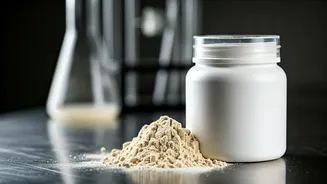The Plastic Problem
The study's primary revelation is the presence of microplastics within dairy products, particularly cheese. This discovery raises concerns due to the potential
health impacts associated with ingesting these minuscule plastic particles. Microplastics, tiny pieces of plastic less than 5 millimeters in size, have become a widespread environmental contaminant. They originate from the breakdown of larger plastic items and have been found in various environments, including oceans, soil, and even the air. The presence of these microplastics in the food chain is a growing worry, as their potential long-term effects on human health are still being investigated. The initial findings strongly suggest a need for further research to fully understand the extent of the problem and to develop strategies to mitigate plastic contamination in food production.
Cheese vs. Milk
One of the key findings from the study is the observation that cheese appears to contain a higher concentration of microplastics compared to milk. This discrepancy suggests that the cheese-making process may contribute to increased plastic contamination. Several factors could be at play, including the use of plastic equipment during production, packaging materials, and potential environmental exposure during the cheese aging process. The processing steps involved in cheese production, such as curdling, pressing, and aging, might provide more opportunities for microplastics to accumulate. This is especially pertinent to aged cheeses, which often undergo extended periods of handling and storage. This crucial distinction highlights cheese as a potential hotspot for microplastic accumulation within the dairy category, thereby amplifying the need for stricter protocols in cheese production and packaging.
Riskiest Cheese Types
Although the specific types of cheese with the highest microplastic content were not detailed in the provided context, the study indicates that certain varieties may pose a greater risk. The variations in microplastic levels likely correlate to production methods, packaging, and the environmental conditions during storage. Certain cheese-making techniques could potentially introduce more plastic particles. For example, cheeses that are aged for longer periods or those stored in certain types of packaging might be more susceptible to contamination. The study's focus on identifying higher-risk cheeses is essential, as this information can guide consumers in making informed decisions. Further research focusing on specific cheese types and manufacturing processes is needed to provide more detailed insights and recommend safer options for consumers.
Consequences Explored
The study's findings bring to light significant questions about the potential health implications of ingesting microplastics. The precise effects of long-term exposure to these particles remain a subject of active research. While definitive answers are still emerging, preliminary studies suggest possible adverse effects. Concerns include the potential for microplastics to disrupt the endocrine system, the possibility of inflammation, and the risk of the particles acting as carriers for other harmful chemicals. Furthermore, microplastics could potentially accumulate in human tissues over time. The study emphasizes the urgency for further investigation into the human health impact of microplastics and for comprehensive measures to limit their presence in the food supply, to protect public health.










